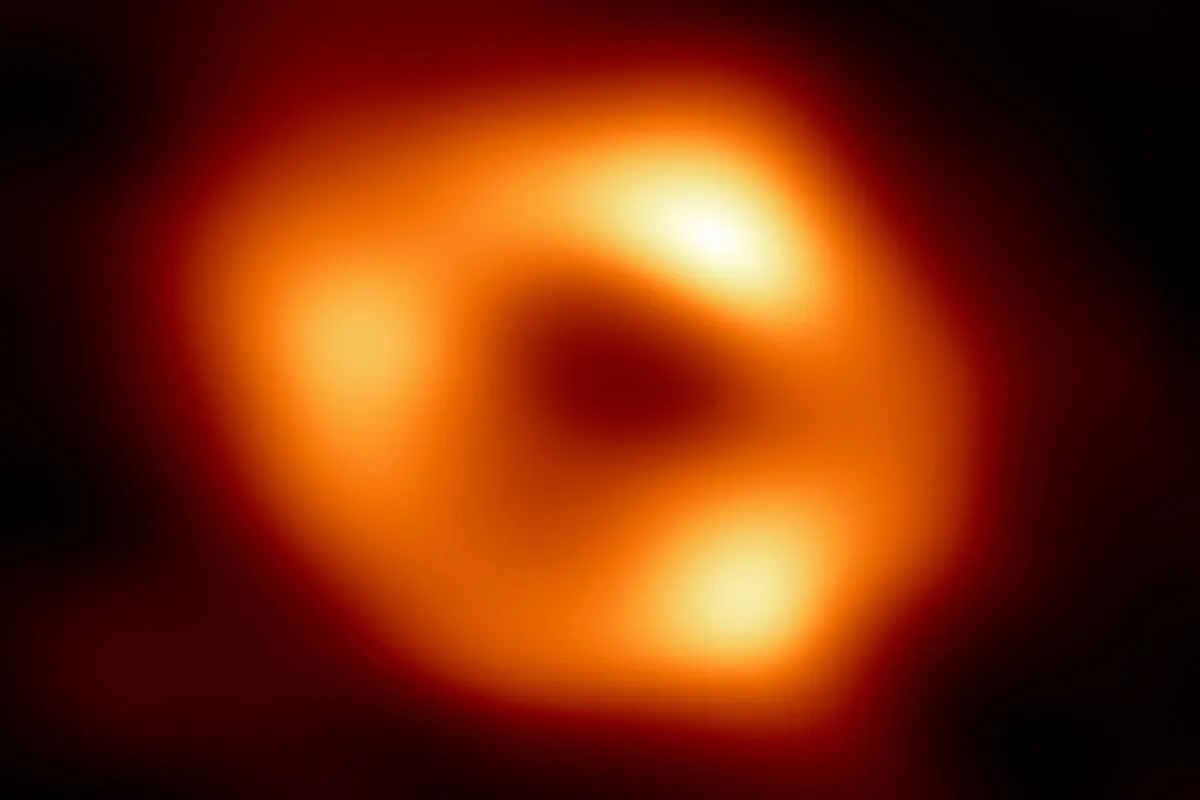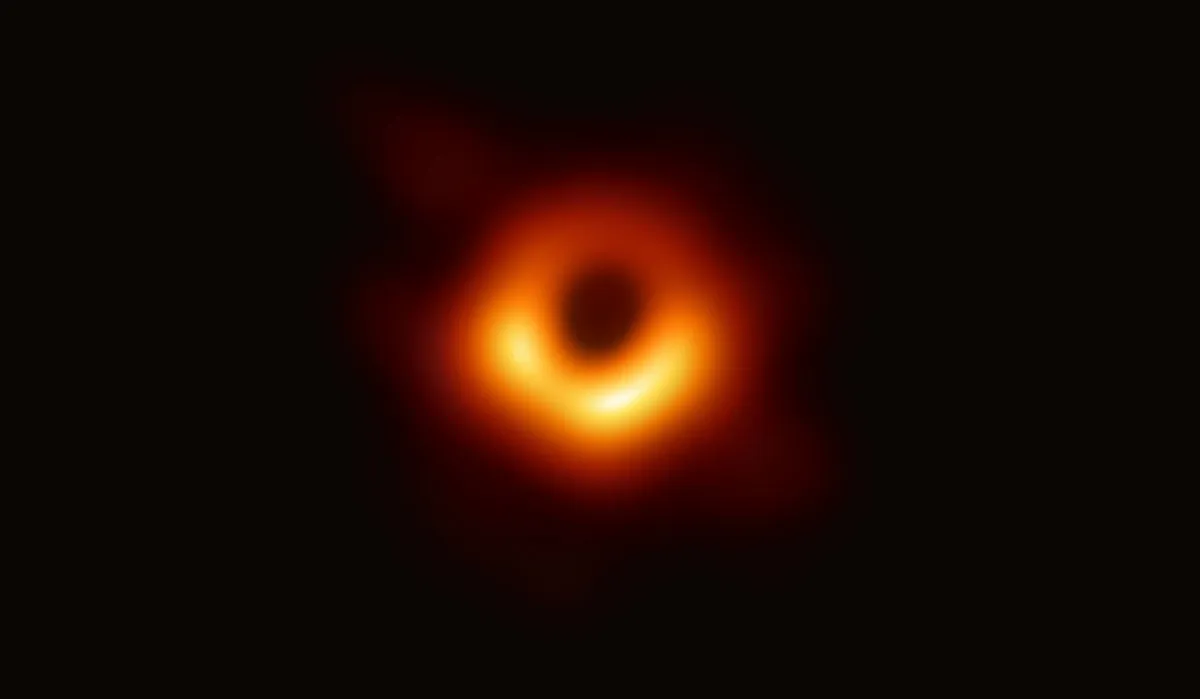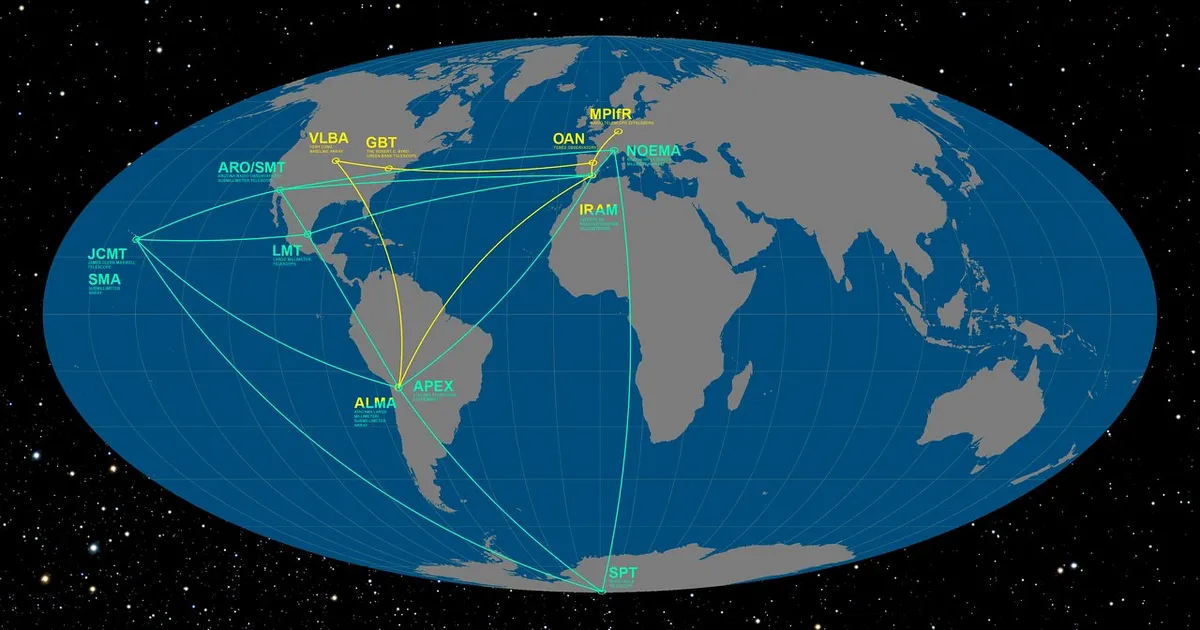The Event Horizon Telescope continues to test Einstein’s general relativity predictions under the most extreme conditions.
So far it has given us two incredible, groundbreaking images: the black hole at the centre of galaxy M87 and the black hole at the centre of the Milky Way.
But if black holes are objects so dense that not even light can escape their gravitational pull, how do astronomers actually study them?
And what can we learn from studying black holes?
Dr Luciano Rezzolla is chair of theoretical physics at Frankfurt University and a member of the executive board for the Event Horizon Telescope.
We spoke to Dr Luciano to find out more about black holes, how we can see them, and what they can tell us.
Why are black holes so difficult to study?
By definition, they cannot produce light, so they’re elusive from that point of view.
They are also the most compact objects that can be produced – if you could compress the Sun to a radius of about three kilometres, then you would produce a black hole.
Because they are intrinsically compact and normally at very large distances, their projected size on the sky is extremely small, which is why it’s so hard to see them.
So how can we ‘see’ black holes?
We can see the light produced by material falling onto a black hole.
As it falls, the material becomes denser because it will be confined to a smaller and smaller region.
It becomes hotter and more energetic and will eventually start shining.
So the light we see is from outside the black hole. Some of that is very close to the black hole, but manages to be emitted before entering.

How did the Event Horizon Telescope help image black holes?
The EHT is not a telescope, but a collection of telescopes. Because black holes are so small on the sky, the only way to see them is using radio telescopes.
When you work out what size you need, you realise you need a telescope a few thousand kilometres in size.
You can’t build a telescope that big, but what you can do is use a technique called radio interferometry to create a virtual telescope which is as large as the distance between the two small telescopes.
The EHT’s first observing run used a network of eight telescopes around the world – from Spain to Antarctica – to create a telescope the size of Earth.
It took the first ever image of a black hole, located in the heart of M87, which we released in 2019.
What did that image show?
In the EHT image we see this funny-looking doughnut-shaped orange object.
This is the light of a disc of plasma that’s rotating around a black hole and is slowly being accreted before it actually enters – the accretion disc.

How do we interpret those black hole images?
Before the image was produced, we were in charge of addressing the problem of what a black hole would look like. We performed a number of simulations.
First, you try to understand what happens to matter falling onto a black hole – if you took a bucket of water and threw it in, how does it move?
We actually use plasma endowed with strong magnetic fields, but that only teaches us what happens to matter.
What we have to understand is what happens to the light this matter is also producing.
It’s a very complicated business in general relativity, because light can do very bizarre turns in a curved spacetime, so we have to calculate how the light actually reaches us.
In this way, we can have a realistic view of the emission from this object.
What have we learned from these observations?
We have evidence that both M87 and our Milky Way have an object at the centre that looks and behaves like a black hole.
We’ve shown that this object fits perfectly with the predictions of general relativity.
That’s a very important result, although maybe something everyone expected to see, but we’ve transformed the concept of black holes and event horizons into a testable object.
To me, that is the most valuable contribution of the Event Horizon Telescope.

Will there be more runs of the EHT in the future?
There are many things which can improve. We are far from having the optimal resolution.
You’ve seen our image – it’s pretty fuzzy. Although the resolution window is the best possible, and a huge jump from what was done in the past, it’s still not good enough for answering some of the questions I personally would like to answer. Is this really a black hole as Einstein predicted?
Because there is still a lot of wiggle room for other interpretations.
We made observing runs in 2018, 2021 and 2022 – the last of which added three new observatories, providing even more data – and we hope that the observations will continue to improve.
It’s going to be a long journey, to be able to answer some of these questions, but it’s something we’re actively doing right now.
Learn more about black holes with our video interviews:
Dr Becky Smethurst's Brief History of Black Holes
Prof Heino Falcke: How to photograph a black hole
Prof Janna Levin: What is a black hole?
This interview originally appeared in the April 2023 issue of BBC Sky at Night Magazine.
